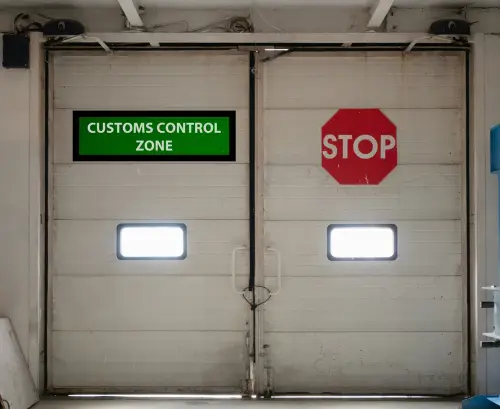The exponential rise of e-commerce over the past decade has seen authorities throughout the world ramp up their efforts to combat the ever-rising issue of illegal activity such as counterfeiting within online marketplaces.
Earlier this year, U.S. Customs and Border Protection officers intercepted two separate shipments of counterfeit Chanel, Louis Vuitton, Gucci, and other brand name items destined for the United States. Seizures such as these are becoming commonplace as authorities crack down on such illegal activities impacting brands.
As covered in a previous GreyScout blog, both authorities and the world’s largest e-commerce marketplace – Amazon – are taking illegal threats to e-commerce brands very seriously. Amazon’s response to the growing issue has been the formation of the Counterfeit Crime Unit, a specialised law enforcement unit that investigates and prosecutes serious crimes, including the production and distribution of counterfeit goods.
But what are e-commerce brands to make of selling their products by unauthorised 3P sellers and distributors operating in a legal grey area? Unfortunately, there is no special Amazon crime-fighting unit to stop what is known as the “grey market”.
Although the sale of products in the grey market can be damaging to a brand’s reputation, they are left to their own devices to defend against such activity. They generally receive limited assistance from Amazon or law enforcement. In fact, in 2020, a ruling by the Justice of the European Union found that Amazon would not be liable when third-party sellers use their marketplace for the sale of grey market goods.
What is the Grey Market?
The grey market or gray market refers to activities in which branded products are sold through unauthorised distribution channels. Grey market vendors may be unauthorised to sell those items or may not have permission to offer products in a specific country or region.
These activities covered extensively in previous GreyScout blogs include product diversion, parallel importing, violations of MAP policies, and other threats.
Why should brands be concerned?
There’s a good reason why brands should go to great lengths to carefully select trusted e-commerce and brick-and-mortar partners to distribute their products.
When goods are sold in the grey market by unauthorized 3P sellers, it can put a tremendous strain on relationships brands have established with authorised wholesalers, distributors, and retailers.
When working with brands, these partners expect a level of exclusivity. They hope to be among a select group authorised to offer consumers a brand’s products. Grey market activity significantly undermines this.
Moreover, once a brand’s product falls out of the authorised supply chain, all control is lost. The brand’s product is no longer being handled by a trusted authorised retailer and there’s no telling if a product will be properly displayed, packaged, handled, or shipped.
A product that has become broken or defective in the hands of an unauthorised retailer could lead to anything from negative customer reviews to seriously harmful or malfunctioning products reaching end consumers, plus many other implications that can be damaging to a brand’s reputation.
Monitoring Grey Market Activity
Brands need to take a holistic approach to combat the grey market, particularly when it comes to cross-border sales. This means ensuring that all regional operations are aware of and taking measures to prevent supplying unauthorised dealers, even if concessions need to be made in terms of lost sales.
In addition, brands should be actively engaged in educating consumers on the importance of shopping from authorised retailers and distributors.
Advertising campaigns through social media platforms are an effective way of reaching out to customers and raising awareness about the risks associated with grey market purchases. These risks may include not being able to guarantee compliance with safety regulations or product instructions not being printed in the correct language. Furthermore, any warranties extended will likely come from a third party rather than the original manufacturer.
The Bottom Line
While grey market activity has been a threat to brands for a long time, its prevalence on e-commerce marketplaces has been exasperated by the COVID-19 pandemic. While e-commerce was a thriving industry prior to the pandemic, social distancing and other measures brought an unprecedented number of shoppers to online marketplaces. This new demand has seen a rise in grey market activity as more-and-more third-party sellers look to capitalise on the world’s shift to e-commerce over brick-and-mortar retail.
While consumer education remains one of the most important tools available for brands looking to reduce their exposure on the grey market, this should go hand-in-hand with online brand protection monitoring tools such as GreyScout.
With tools like GreyScout, brands can monitor, verify and enforce against unauthorized 3P sellers selling grey market products and infringing brand policies such as selective distribution agreements, and consumer safety policies by scanning across online marketplaces like Amazon, eBay and Google Shopping.
Online brand protection tools can help brands know exactly who’s selling their products so they can take any necessary enforcement actions.

